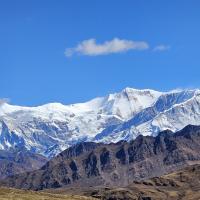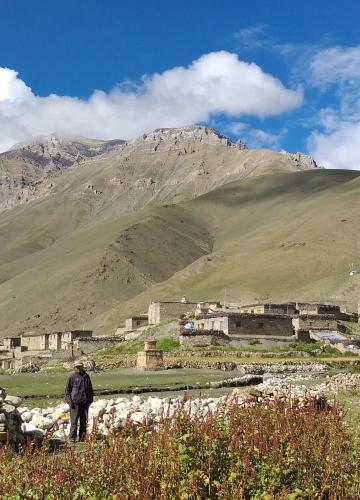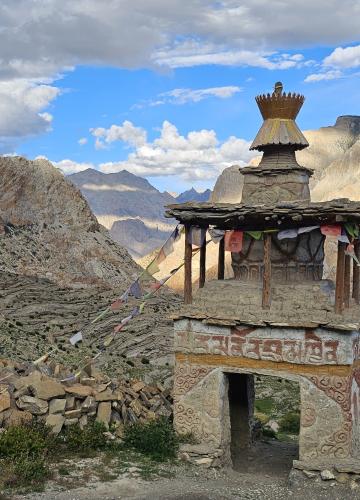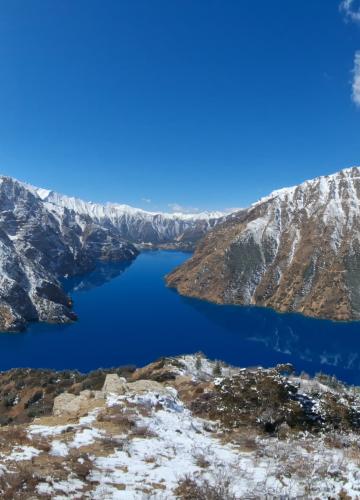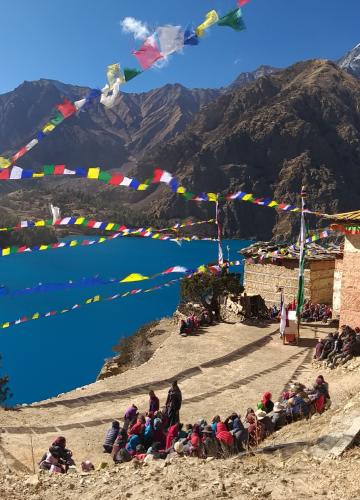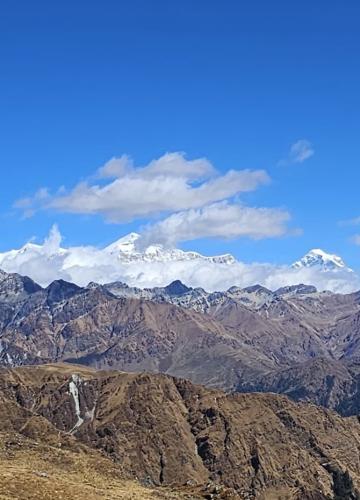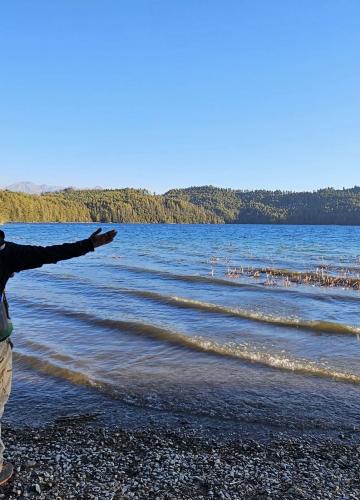Nestled in the heart of the Himalayas, Nepal is globally renowned for its breathtaking trekking routes, ranging from the iconic Everest Base Camp to the mystical Annapurna Circuit. Beyond these well-worn trails lies another treasure that is relatively unknown: the Jumla Kagmara Dho Tarap Culinary Trek, a culinary odyssey into the most inhospitable and ruggedly beautiful landscapes of the world, intermingled with its rich tapestry of flavors.
This trek is unique not only in mountain scaling and valley crossing but also in celebrating Nepal's diverse food culture-from savoring hand-ground barley flour porridge in Jumla to fermented yak cheese in the highlands of Dho Tarap. Rarely does a trail fuse adventure with gourmandise, but here is one. For avid trekkers or food lovers, this trek will be an unforgettable journey to explore Nepal's untouched traditions and cuisine.
Jumla Kagmara Dho Tarap trek is one of the most off the beaten path and untouched trails of Nepal that passes through Karnali region full of ethnic villages and lovely people. It passes over stunning gorges, green alpine pastures and through high altitude villages which still retain their traditional values.
This trek may be considered as cultural tour in essence since it will give visitors the best chance of exploring the traditions and practices of the Dolpo and Jumla people. Food experiences are featured along the journey some of which include Lid forerunners and Carnivores. There are very different tastes unique to the Himalayan climate like thukpa, a noodle soup and tsampa, which is roasted barley flour, used in everything from porridge to dumplings.
The trek also reveals the region's spiritual heritage, with prayer flags fluttering atop mountain passes and age-old monasteries offering respite to weary adventurers. Combining nature, culture, and cuisine, this trek is a holistic Himalayan experience like no other.
What is the Jumla Kagmara Dho Tarap Culinary Trek?
Nestled in the remote western Himalayas of Nepal, the Jumla Kagmara Dho Tarap Culinary Trek takes you through diverse terrains—from lush green valleys to high-altitude arid plateaus. This trek is an enriching fusion of exploration and gastronomy, introducing travelers to the unique flavors of the Karnali and Dolpo regions. As you traverse the rugged paths, you’ll have the chance to sample traditional dishes prepared using age-old recipes and locally sourced ingredients.
The area starts from the beginning Kalika-7, the district of Kalika officially known as Jumla, which is opened the door to the Karnali and then continues through the Kagmara Pass, the mysterious area of Dho, and Tarap valley of Dolpo. During the whole tour you are going to meet places of untouched nature, temples, antique villages, people who are very hospitable and ready to tell about their cuisine and traditions.
Why Choose the Jumla Kagmara Dho Tarap Culinary Trek?
1. A Culinary Adventure Like No Other
Food is an integral part of culture, and the Jumla Kagmara Trek is a celebration of this connection. You’ll savor dishes like:
- Dhido: A traditional Nepali staple made from buckwheat or millet flour, often served with lentil soup and spicy pickles.
- Kachhyamba: A special fermented barley drink enjoyed by locals in high-altitude regions.
- Yak Butter Tea: A hearty, energy-boosting beverage perfect for chilly mountain days.
- Thukpa: A warming noodle soup infused with locally grown herbs and spices.
These meals not only fuel your trekking adventure but also offer insights into the resourcefulness and creativity of the communities you visit.
2. Immersive Cultural Encounters
The trek provides a rare glimpse into the life and traditions of the Dolpo and Karnali communities. As you pass through villages like Jumla, Dho, and Tarap, you’ll witness locals engaged in farming, weaving, and religious practices. You’ll also have opportunities to participate in cooking demonstrations, learning to prepare dishes using local techniques.
3. Unparalleled Scenic Beauty
The natural beauty in combination with the colourful houses and the shining Buddist lamae is settled in every stepped in this trek, starting the Jumla’s green apple orchards to Phoksundo Lake – the nourishing blue sea. A bridge leads one across the Kagmara Pass (5,115m) where you can enjoy the splendid location of towering snow clad mountains and pristine environment. Dolpo’s beautiful rugged terrains including monasteries and stupas resembles a place that has not been touched by time.
Best Time to Trek Jumla Kagmara Dho Tarap Culinary Trek
Timing is everything when it comes to high-altitude trekking, and the Jumla Kagmara Dho Tarap Culinary Trek is no exception. The trek’s remote trails and varied terrain are best experienced during two prime seasons:
Spring (March to May):
Spring is characterized by favorable weather, beautiful flowers and, leaves on trees. The hilly and shelving terrain blossoms with the rhododendrons and the alpine flowers. The temperature is not very high as well as the days are longer than in winter this is why it is more comfortable for trekking. It’s also a favorable season for enjoying new crops and foods that are available in the region to enhance the experience of the trek.
Autumn (September to November):
Trekking is said to be best done in the autumn season in Nepal. It is very open with clear skies so you see the mountains way before you get to it. The climate is perfect for trekking given that the conditions during this time of the year are clear with crisp air and mild temperatures. The villages become active during the festivals that happen after harvest, such as Dashain and Tihar which the travelers can use to interact and have a taste of traditional Nepali food.
Avoid the monsoon season (June to August) due to heavy rainfall, slippery trails, and the risk of landslides. Similarly, winter (December to February) brings harsh cold and snow, making high passes treacherous and remote lodges less accessible.
Ready to begin on this incredible journey? Contact us today to reserve your spot on the Jumla Kagmara Dho Culinary Trek. Our team is here to assist with any questions and to help you prepare for your adventure.
Don't miss out on this unique opportunity to explore one of Nepal's most remote regions while indulging in its rich culinary traditions. Secure your place now for an experience of a lifetime!

